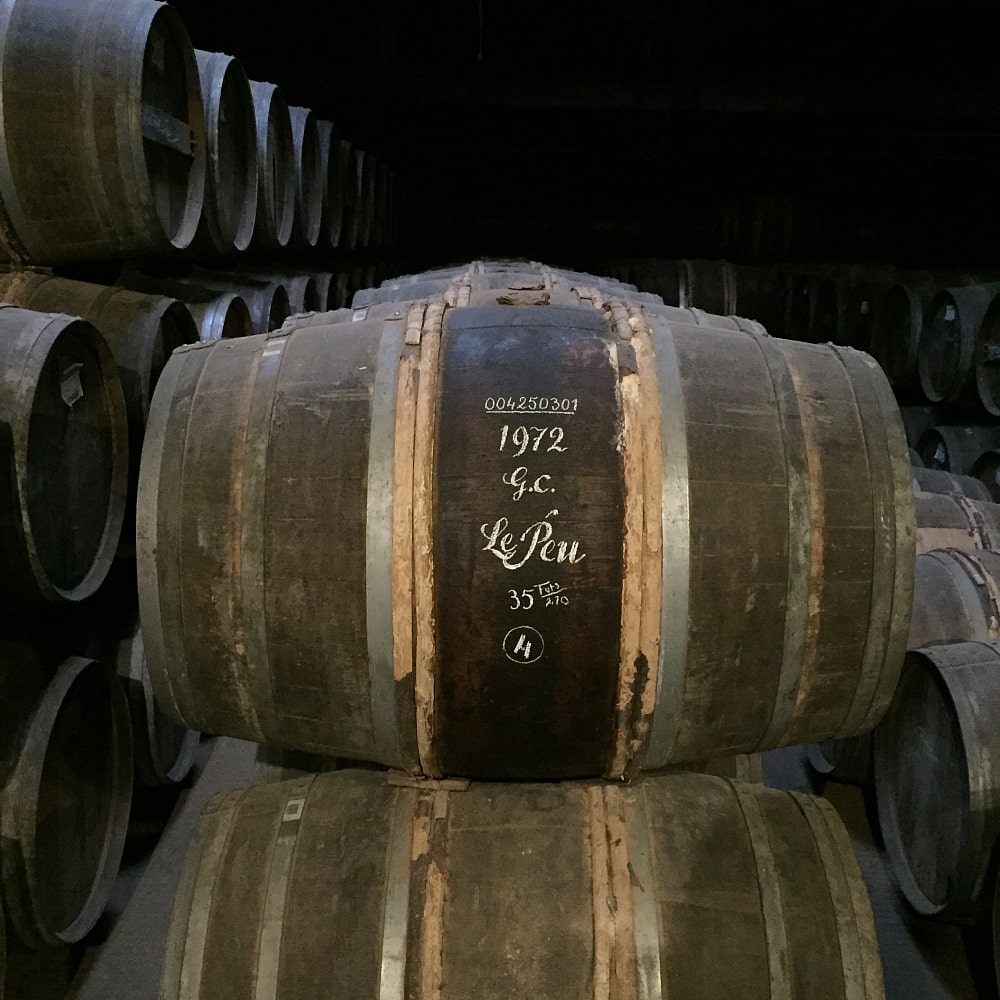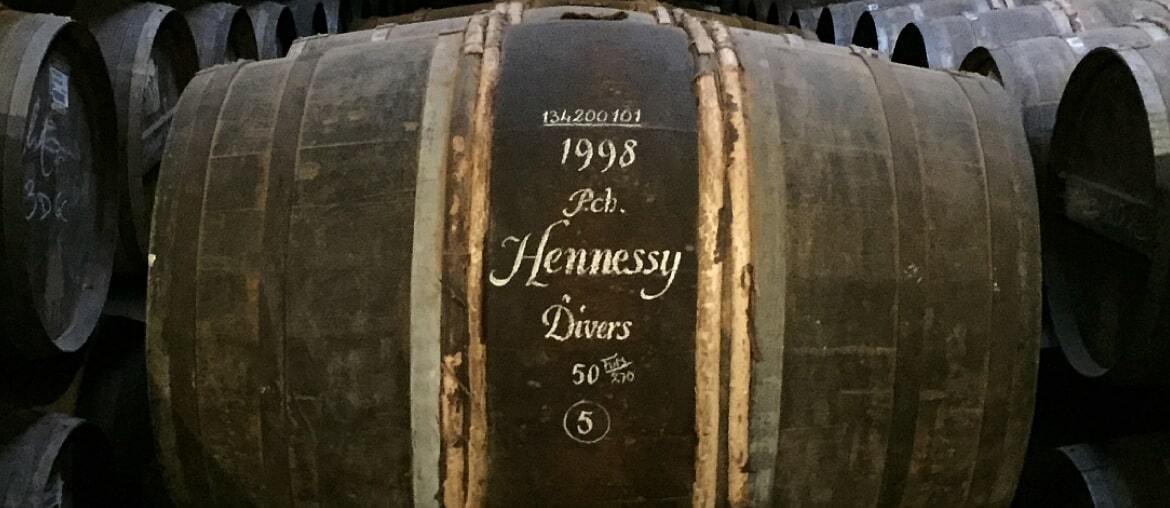As humankind accelerates through the 21st century, embracing technology and the wonders it brings, it’s refreshing to know that some areas remain where time-honored tradition is key. Our beloved Cognac is, of course, one of these. But did you know that the ancient art of calligraphy is also inexorably linked to our favorite spirit?
Deep within the hallowed cellars of Cognac houses, artist-calligraphers scribe beautiful lettering onto the barrels of eau-de-vie—a custom as old as the drink itself. Join us, as we delve into this fascinating, yet almost secret, artform, and find out why this quaint ritual is so important to the very fabric that makes up the production of Cognac.

A Brief Overview of Calligraphy
To fully appreciate the Cognac-calligraphy link, we must first understand a little more about the art itself. In a world where we’re more familiar with typography—letters and characters produced in a printed or digital format—calligraphy is a complete contrast, in that it’s written by hand. Indeed, the fonts you choose on your computer today all have their roots in calligraphy.
Interesting fact: The reason we have so many computer fonts to choose from can be traced back to a young Steve Jobs being fascinated during a calligraphy class. This love of lettering translated into his 1984 Macintosh launch offering the user an extensive range of typography. When Windows took off a year later, they too had to replicate this. Today, Word, and other similar programs, allow you to choose from hundreds of different lettering formats, all at the touch of a mouse.
What is calligraphy?
The art is as old as mankind, originating from when ancient humans scratched marks onto a rock to signal to others where a food source (think tasty mammoth) was available. As humans evolved, so did these basic markings. In approximately 600BC, Romans invented the Latin alphabet. This is the most probable origin of what we now refer to as calligraphy. The word itself comes from the Greek words for beauty and to write, kallos and graphein.
This developed into three different formats over the following centuries:
- Imperial Capitals that were carved onto stone
- Rustic Capitals that were painted on walls
- Roman Cursive for everyday use

Fast forward another couple of hundred years and monks developed a more flamboyant, rounded script. This was called Unical and was used to copy religious texts. As time went on, more variations appeared, including Carolingan and Gothic. Come the Renaissance era, even more beautiful lettering became commonplace, such as Chancery and Italics.
The artform continued to develop. As with any artistic form, trends came and went, rules were made, bent, broken, and re-written. While calligraphy today remains the formation of beautiful lettering, every individual fuses their own style into their work. The similarities to the art of blending Cognac are wholly apparent. So it makes perfect sense that the two crafts have a common link, which we’ll now go on to explore in more depth.
The Hidden Art Contained Within Cognac Cellars
If you’ve ever had the privilege of visiting a Cognac cellar you might have noticed the chalk markings that adorn many of the barrels. Sometimes almost hidden beneath years of dust and cobwebs, these denote the year of harvest, location, plot, and sub plot from which the precious nectar was derived. Considering that some eau-de-vie takes decades, or even a century or more, to mature, to lay eyes on these is to connect with a bygone era.
The markings are designed to last many years. Therefore, as with any work of art, those who pen them want the lettering to not only serve the purpose of imparting information, but to be aesthetically pleasing when viewed. In the world of Cognac, this ancient craft utilizes a font called Chancellery. This evolved at the end of the middle ages in Italy. It doesn’t take much imagination to picture calligraphers of the period tracing beautiful forms with a feather quill by flickering candlelight.

When this same lettering is used to mark the textured wood of Cognac barrels, a different method of implementation is, of course, necessary. A pen and nib wouldn’t be a suitable tool of the trade, so tradition demands that it’s applied with chalk. The shapes of the letters can be varied—as we mentioned earlier, every calligrapher has their own particular style. They might make the letters wider, higher, fatter, stocker. However, within the constraints of the artist-calligrapher in the world of Cognac, all the lettering is based around the font of Chancellery.
This type of markings is typically used on barrels. For demi-johns, or damme-jeans to give them their official French name, you might see the same beautiful font used on a label hung around the neck of the cask. In some cases this will be in ink: in others, on a slate board and written in chalk. Either way, the lettering is still likely to be penned in an ornate and traditional fashion.

What’s in a marking?
The wording used on the barrels tends to be unique to each Cognac house. However, they might typically contain the following information:
- The year of harvest
- Terroir (This might be abbreviated, so GC for Grande Champagne, PC for Petite Champagne, etc.)
- Name of the Cognac house
- It might also name the plot or subplot—perhaps denoted by a code or number
The reason for all this information is to make it easy for the cellar master, or their successor, to keep track of what is likely to amount to thousands of barrels within a cellar.

Interestingly, it seems that the use of chalk markings in this fashion isn’t replicated with other spirits. Whisky barrels, for example, have the information stamped onto the barrel lid. The same tends to be true for wine barrels as well.
Cognac Calligraphy in the 21st Century
One thing we adore about Cognac is the tradition. This method of marking barrels is just another wonderful facet of this. Artist-calligrapher, Philippe Amrouche, is dedicated to ensure this elaborate skill continues. He coaches writers to learn the finesse of the craft for many houses, including Remy Martin and Hennessy.
As well as the use of calligraphy on the barrels themselves, the talents of these trained individuals are also called upon to create certificates of authenticity for limited editions and hand crafted bottles.
Other areas into which calligraphy has further spilled into the world of Cognac include the creation of limited edition Cognacs. Examples include the calligraphy-inspired 2015 collaboration between Hennessy and the tattoo artist, Scott Campbell. His unique style is inspired by calligraphy and the flamboyance of the written word.
Of course, we shouldn’t forget artisan houses and various small-batch Cognacs that are beautifully presented with hand written labels. Although representing a slightly different element of the craft, such tendencies continue to harness the characteristics of the artform.

Whatever way you look at it, the beauty of calligraphy only adds to the seduction of France’s most iconic drink. When you imagine the likes of Jean Martell and Felix Courvoisier (founders of Martell and Courvoisier Cognac respectively) commissioning the calligraphers of the time to adorn the barrels that would one day make up the Cognacs of the future, it embodies the very heart of the passion and love that goes into bringing every bottle into existence.
Long may it continue.








1 Comment
Well done, lots of information on a surprising topic. Thank you.